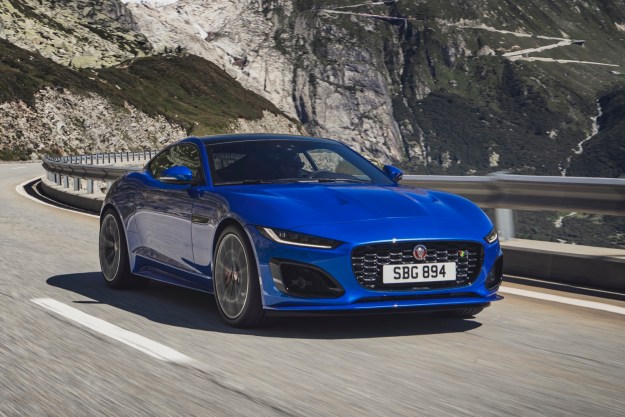
“We’ve had a discussion — will the next F-Type be mid-engine or front-engine? We’ve had that discussion. We haven’t decided yet. And even within the design studio we disagree with each other,” revealed Ian Callum, the head of Jaguar’s design department, in a recent interview with Road & Track.
Putting the engine directly behind the passengers would turn the F-Type into a completely different type of machine. The current model is front-engined and rear-wheel drive, though all-wheel drive is optionally available, so its design is characterized by a long hood and a short decklid. A mid-engined model would likely have a shorter, lower hood and a longer deck lid.
Going mid-engined would also help the F-Type stand out from its main rivals, some of which are too confined by tradition for such a drastic evolution. Notably, the Porsche 911 has been rear-engined for over five decades, and it will remain that way for as long as it’s in production. Porsche recently built a mid-engined 911 for racing, but it understandably wouldn’t dare put the engine in the middle of a street-legal car and change the iconic lines that have characterized the model since its inception.
Finally, the idea of a mid-engined F-Type isn’t as far-fetched as it might initially sound. Callum revealed that Jaguar considered the layout when it was developing the current model, and it even built a prototype to explore what its first series-produced mid-engined model might look like. The model wasn’t shown to the public, and it was never captured by the auto industry’s spy photographers.
The Jaguar F-Type isn’t scheduled for replacement until the beginning of the next decade, so Callum and his team have plenty of time to weigh the pros and cons of putting the engine behind the passenger compartment.
Editors' Recommendations
- New type of ocean-covered ‘Hycean’ exoplanet could support life
- Genetically engineered goats could be the key to mass-producing cancer drugs
- PlayStation VR on the PS5 could ditch Move controllers for finger-tracking
- A racing-inspired software update could boost the Jaguar I-Pace’s range
- Forget curing diseases, genetic engineering could keep our beer fresh longer




